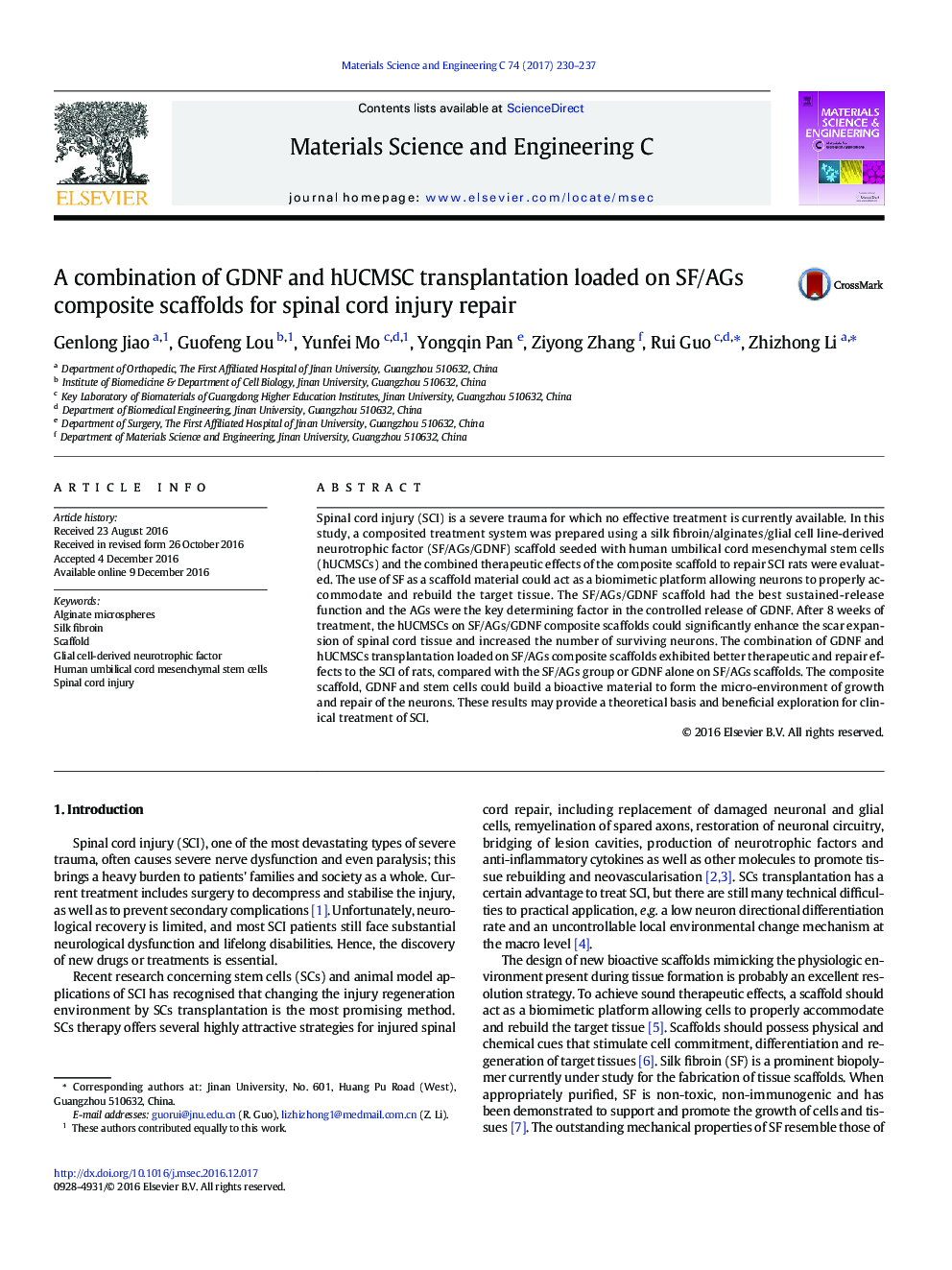| Article ID | Journal | Published Year | Pages | File Type |
|---|---|---|---|---|
| 5435024 | Materials Science and Engineering: C | 2017 | 8 Pages |
â¢SF/AGs/GDNF scaffolds seeded with hUCMSCs were prepared.â¢SF/AGs/GDNF scaffold had the best sustained and controlled release of GDNF.â¢GDNF and stem cells could form the micro-environment of growth and repair of the neurons.â¢The composite scaffolds exhibited better therapeutic and repair effects to the SCI.
Spinal cord injury (SCI) is a severe trauma for which no effective treatment is currently available. In this study, a composited treatment system was prepared using a silk fibroin/alginates/glial cell line-derived neurotrophic factor (SF/AGs/GDNF) scaffold seeded with human umbilical cord mesenchymal stem cells (hUCMSCs) and the combined therapeutic effects of the composite scaffold to repair SCI rats were evaluated. The use of SF as a scaffold material could act as a biomimetic platform allowing neurons to properly accommodate and rebuild the target tissue. The SF/AGs/GDNF scaffold had the best sustained-release function and the AGs were the key determining factor in the controlled release of GDNF. After 8Â weeks of treatment, the hUCMSCs on SF/AGs/GDNF composite scaffolds could significantly enhance the scar expansion of spinal cord tissue and increased the number of surviving neurons. The combination of GDNF and hUCMSCs transplantation loaded on SF/AGs composite scaffolds exhibited better therapeutic and repair effects to the SCI of rats, compared with the SF/AGs group or GDNF alone on SF/AGs scaffolds. The composite scaffold, GDNF and stem cells could build a bioactive material to form the micro-environment of growth and repair of the neurons. These results may provide a theoretical basis and beneficial exploration for clinical treatment of SCI.
Graphical abstractDownload high-res image (268KB)Download full-size image
